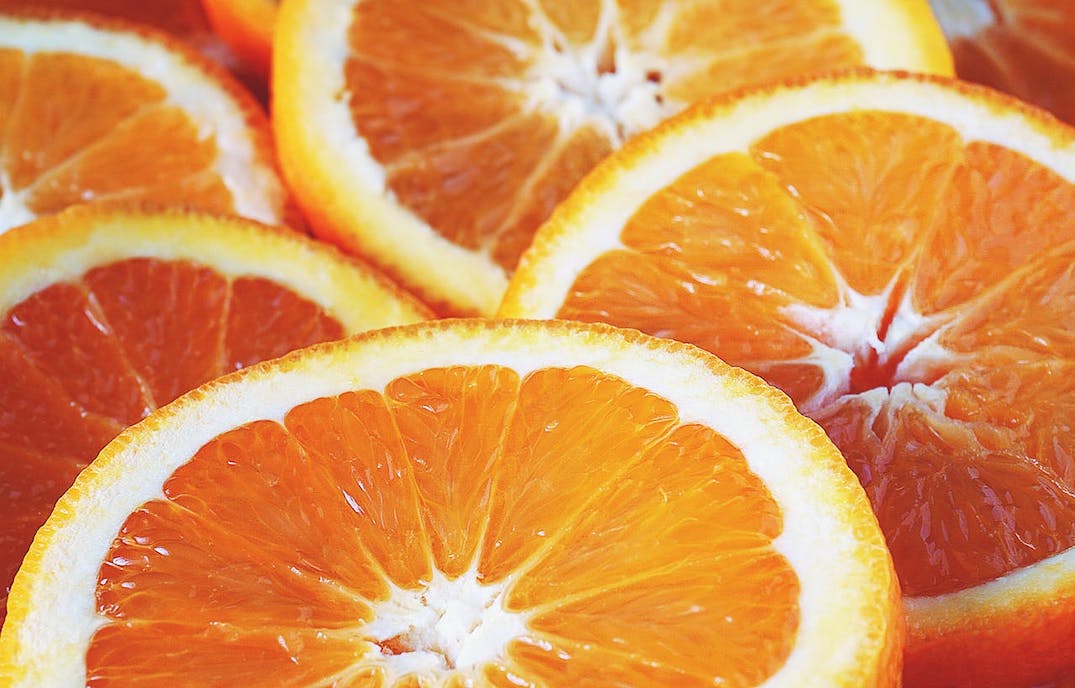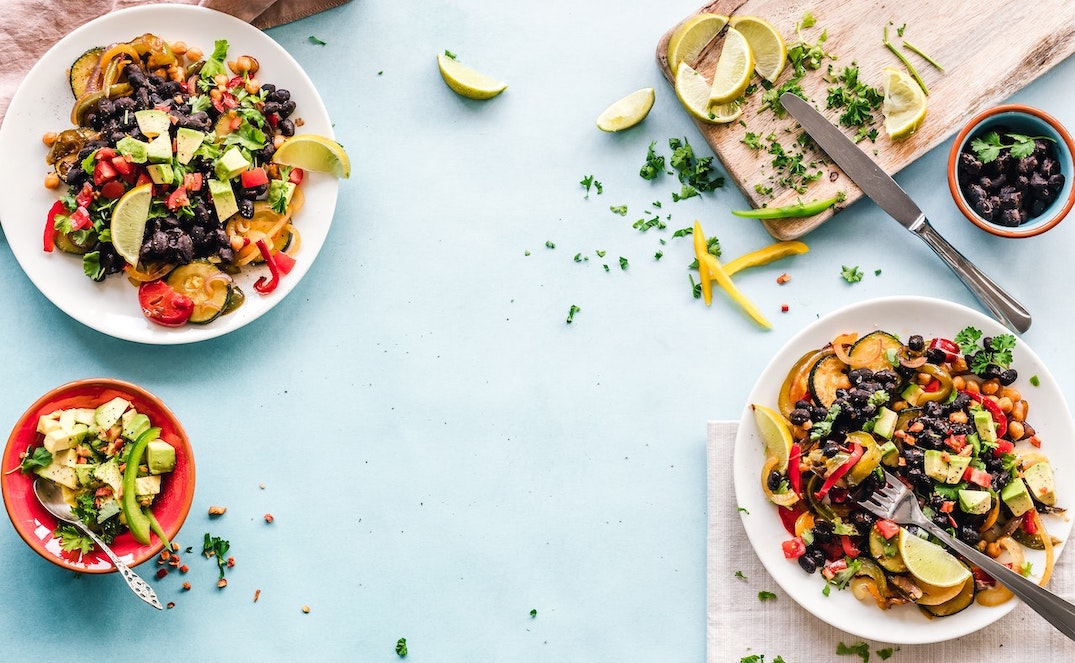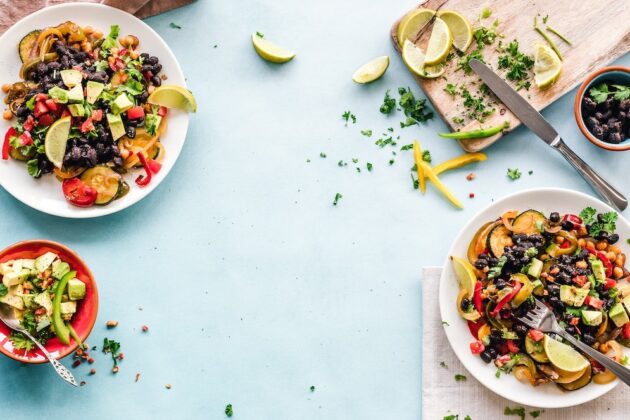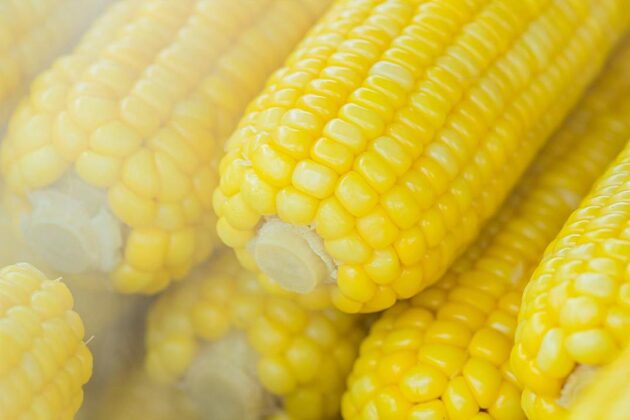Can I Eat Pizza With Diabetes? A Dietitian Answers
If you are diabetic, it’s important to eat a healthy diet to control your blood sugar levels and avoid the health complications that can come from your condition. But I know that choosing a healthy diet can feel restrictive at times, especially if it doesn’t include favorite foods like pizza.
So, do you have to say goodbye to your favorite foods, or is it okay to eat pizza with diabetes?
Don’t worry, the answer is yes! You can still enjoy pizza even if you are diabetic.
The key is moderation. You don’t want to eat it too often, or it can negatively affect your blood sugar levels and your ability to manage your diabetes. This is true with many other foods as well.
I may be biased, but I believe that working with a Registered Dietitians (RD) is the best way for someone with diabetes to learn how to incorporate the foods they love into their daily lives while still managing their blood sugar levels. Zaya Care can match you with an RD specializing in diabetes who accepts your insurance, so most patients pay $0 for one-on-one nutritional counseling.
In this guide, I’ll cover how to eat your favorite foods, like pizza, the best types of pizza to choose for diabetics, tips to enjoy pizza while still maintaining a healthy diet, and more.

Find a dietitian covered by insurance
90% of Zaya Care patients pay $0 for dietitian visits
A dietitian’s answer: Is it ok to eat pizza with diabetes?
While it may seem like one of the first foods you should cut out when you are diagnosed with diabetes, it is possible to enjoy pizza and still have a healthy diet that supports glycemic management.
The most important part of creating a healthy diet that supports your blood sugar and is easy to maintain is to include foods you love. However, it’s essential to be mindful of how much and how often you have certain foods. This is called moderation.
Pizza is a delicious dish beloved by many; however, we know it contains a large amount of carbs from the crust, fat from the cheese, and calories from those and everything else added to it.
Eating pizza frequently can cause weight gain, blood sugar spikes, and alterations in lipid values such as cholesterol and triglycerides.
So how many slices of pizza can a diabetic eat and have it still be considered moderation?
The amount will be different for each individual but sticking with one to two slices is a good rule. If this doesn’t seem like enough to keep you satisfied, you can also include other foods with your meal like a side salad.
Why diabetics should eat pizza in moderation
There are many delicious foods that we know we shouldn’t eat in excess because they aren’t the best for us. Pizza is one of those foods. Below are a few reasons you should eat pizza in moderation if you have diabetes.
1) High in simple carbohydrates
The bulk of pizza is the crust, which is high in simple carbohydrates. While carbohydrates aren’t bad, it’s important to be mindful of how much you have, how often you eat them, and the quality of the carbs you are choosing.
Eating a large portion of carbs in one sitting can lead to a glucose spike which makes it more challenging to control your blood sugar levels.
2) High in saturated fat
Aside from the crust, most pizzas contain a large portion of cheese on top. Cheese can be an excellent protein however, it also contains high amounts of saturated fats.
Those with diabetes are two times more likely to develop heart disease than those without. Therefore, it’s important to limit high-fat foods, especially those high in saturated fats as these can increase cholesterol levels and the risk of stroke.
3) High in calories
The combination of ingredients in pizza often leads to a calorie-dense product. Consuming large portions of these types of foods can cause weight gain and the development of obesity, which makes managing diabetes more challenging.
4) High in sodium
The cheese and other toppings on pizza, like pepperoni, are high in sodium. While sodium doesn’t directly influence blood sugar levels, it is recommended that those who have diabetes limit their sodium intake.
A diet high in sodium can increase the risk of developing conditions such as hypertension, which is a risk factor for heart disease, stroke, and kidney disease, which diabetics are already at a higher risk for developing.
Best types of pizza & ingredients for diabetes
If you want to be able to enjoy pizza in moderation and still manage your diabetes, below are some tips for picking out the best pizza and ingredients to support glycemic management.
If you are making pizza at home, try to follow these tips. If you’re getting pizza out, use these tips as ideas for substitutions or adjustments depending on what is available.
- Whole wheat crust. If you can, opt for a whole wheat pizza crust. Whole wheat includes the bran from the wheat that is normally removed during processing. The bran contains fiber which helps to slow down how fast your blood sugars rise.
- Cauliflower crust. Try out a low-carb pizza crust option such as cauliflower crust. Many restaurants offer this on their menus as a substitute for people who need a gluten-free option. You can also purchase premade cauliflower crust to build your own at home.
- Vegetable toppings. Load up on all the veggie toppings you like. This increases fiber and volume, so you feel more satisfied with a smaller portion.
- Lean proteins like chicken or turkey. Instead of sausage or pepperoni, consider leaner meat like shredded chicken or ground turkey to add protein to your pizza. This cuts down on the saturated fat content while still making it filling and delicious.
- Low-fat cheese. Consider swapping in a low-fat cheese. This may be easier when making pizza at home however, this simple swap can cut down on extra fat and calories without sacrificing flavor.
- Fresh tomato sauce with no added sugar. If making pizza at home, look at different tomato sauce options and choose one that doesn’t contain any added sugars. Sugar is often added to tomato sauce to cut down on the acidity however, this can cause glucose spikes.
- Herbs and spices for flavor. Cut down on salt and increase the nutrient content of your pizza by including more fresh herbs and spices for flavor such as fresh basil, oregano, garlic, or thyme.
Types of pizza & ingredients to avoid
Now that you know some easy swaps to lighten up your favorite pizza, let’s look at some types of pizza and ingredients to limit or avoid if you have diabetes.
- Deep-dish crust. Who doesn’t love a deep-dish pizza? Unfortunately, the deeper the dish, the more the carbs. This is one to limit or avoid due to the high carbohydrate load from just the crust alone.
- Stuffed crust. Stuffed crust varieties of pizza contain even more cheese and more crust and therefore, a higher saturated fat, carb, and calorie content per slice. For example, Pizza Hut’s Original Meat Lover’s Stuffed Crust Pizza contains a whopping 420 calories, 10 grams of saturated fat, 940 mg of sodium, and 36 grams of carbs per slice.
- High-sugar sauces. You can easily tack on a ton of extra calories and sugar from the sauces added to your favorite pizzas, such as barbeque sauce. It’s best to skip the extra sauces and stick with plain tomato sauce.
- Fatty meats like pepperoni or sausage. Pizza is often laden with processed meats such as pepperoni and sausage. While tasty, these include a ton of extra sodium and saturated fat compared to leaner options like chicken.
- Full-fat cheeses. Full-fat cheese isn’t necessarily bad for you, but when used in large portions such as it is with pizza, full-fat cheese can add extra calories, fat, and sodium very easily.
- Extra cheese topping. Many pizza chains offer the option to include extra cheese topping on your pizza which can greatly increase the already high calorie, fat, and sodium content in one slice of pizza.
- White flour crust. While white flour crust is the most common option for pizza crusts, this refined flour is more likely to create a spike in blood sugar levels. Choose whole wheat crust when possible.
- Sweet toppings like pineapple. Sauces aren’t the only topping that can have hidden added sugars. Sweet pizza toppings, such as pineapple chunks, can further increase the carb load and added sugar content of any pizza.
- Creamy sauces like Alfredo. Even savory sauces can have negative impacts. For example, cream sauces like Alfredo can add a hearty boost of sodium, fat, carbs, and calories.

Find a dietitian covered by insurance
90% of Zaya Care patients pay $0 for dietitian visits
Tips for enjoying pizza while maintaining a healthy diet
If you occasionally enjoy a pizza, even with the toppings mentioned above, you can still maintain a healthy diet. Below are some tips to remember next time you grab a slice to ensure you are keeping your blood sugars and health in mind.
- Stick to a slice or two. Practice portion control when you enjoy pizza by sticking to just a slice or two depending on the size of the slice. If you still feel hungry, consider adding a light side like a salad.
- Try cooking your own pizza. You can easily create a more healthy and balanced pizza option by choosing to make your own at home. You can use a low-carb pizza crust recipe, such as this cauliflower crust from EatingWell, as a base for your favorite toppings.
- Choose nutritious pizza ingredients & toppings. If there are lighter options available, try to choose them more often. For example, if you go somewhere that provides options for thin crust or whole wheat crust instead of regular, choose that and include as many of your favorite veggie and lean meat toppings as you like.
- Pair with a salad. Adding a filling, fiber-rich, low-carb option for your side, such as a small salad, can help you feel full and aid in blood sugar management. This makes eating only one to two slices a lot easier because you feel satisfied.
- Drink plenty of water. Always try to stay hydrated as dehydration can increase blood sugar levels, especially in combination with a very salty meal. Sip on fluids throughout the day and keep a water bottle on hand wherever you go.
- Monitor blood sugar levels after eating. Be aware of potential glucose spikes and see how pizza affects your numbers by checking before and after you eat.
- Plan the rest of your meals for the day to be lower in carbohydrates. If your lunch contains two slices of pizza, try choosing lower-carb options later in the day, such as a protein with a small portion of a high-fiber grain and some non-starchy veggies like broccoli or Brussels sprouts.
- Consider pizza as an occasional treat rather than a regular part of your diet. A big part of moderation is not overdoing it. Pizza should be enjoyed, but not every single day. Limit your intake to only occasionally.
- Eat slowly to better recognize fullness cues. Eating slowly during meals helps to give your body time to register when it feels full. This can be an effective strategy to avoid overeating. Eat your pizza slowly so you feel more satisfied without getting overly stuffed.
Why we recommend working with a Registered Dietitian if you have diabetes
Managing a condition like diabetes can be stressful, confusing, and time-consuming. You may be asking questions like—is pizza ok to eat—about every food you’re eating in a day. But you don’t have to do it on your own.
Working with a registered dietitian (RD) specializing in diabetes can help. RDs are nutrition professionals who specialize in helping people make changes in their diet to better control their conditions, including diabetes.
RDs can provide you with individualized guidance and support to help you meet your goals and be the healthiest version of you, while still enjoying your favorite foods like pizza.
Zaya Care can match you with a Registered Dietitian who accepts your insurance, so most patients pay $0 for one-on-one nutritional counseling.
If you’re ready to take the first step toward diabetes management with an RD on your side, you can use Zaya Care’s free Dietitian Search Tool to find the right provider for you.
When you request an appointment with one of our Registered Dietitians, we’ll check your insurance, so you know exactly how much you’ll have to pay, if anything at all.
It’s worth noting that 90% of Zaya Care patients pay $0 for nutrition care with a registered dietitian as we are in-network with many major carriers.

Find a dietitian covered by insurance
90% of Zaya Care patients pay $0 for dietitian visits
If you are diabetic, it’s important to eat a healthy diet to control your blood sugar levels and avoid the health complications that can come from your condition. But I know that choosing a healthy diet can feel restrictive at times, especially if it doesn’t include favorite foods like pizza.
So, do you have to say goodbye to your favorite foods, or is it okay to eat pizza with diabetes?
Don’t worry, the answer is yes! You can still enjoy pizza even if you are diabetic.
The key is moderation. You don’t want to eat it too often, or it can negatively affect your blood sugar levels and your ability to manage your diabetes. This is true with many other foods as well.
I may be biased, but I believe that working with a Registered Dietitians (RD) is the best way for someone with diabetes to learn how to incorporate the foods they love into their daily lives while still managing their blood sugar levels. Zaya Care can match you with an RD specializing in diabetes who accepts your insurance, so most patients pay $0 for one-on-one nutritional counseling.
In this guide, I’ll cover how to eat your favorite foods, like pizza, the best types of pizza to choose for diabetics, tips to enjoy pizza while still maintaining a healthy diet, and more.

Find a dietitian covered by insurance
90% of Zaya Care patients pay $0 for dietitian visits
A dietitian’s answer: Is it ok to eat pizza with diabetes?
While it may seem like one of the first foods you should cut out when you are diagnosed with diabetes, it is possible to enjoy pizza and still have a healthy diet that supports glycemic management.
The most important part of creating a healthy diet that supports your blood sugar and is easy to maintain is to include foods you love. However, it’s essential to be mindful of how much and how often you have certain foods. This is called moderation.
Pizza is a delicious dish beloved by many; however, we know it contains a large amount of carbs from the crust, fat from the cheese, and calories from those and everything else added to it.
Eating pizza frequently can cause weight gain, blood sugar spikes, and alterations in lipid values such as cholesterol and triglycerides.
So how many slices of pizza can a diabetic eat and have it still be considered moderation?
The amount will be different for each individual but sticking with one to two slices is a good rule. If this doesn’t seem like enough to keep you satisfied, you can also include other foods with your meal like a side salad.
Why diabetics should eat pizza in moderation
There are many delicious foods that we know we shouldn’t eat in excess because they aren’t the best for us. Pizza is one of those foods. Below are a few reasons you should eat pizza in moderation if you have diabetes.
1) High in simple carbohydrates
The bulk of pizza is the crust, which is high in simple carbohydrates. While carbohydrates aren’t bad, it’s important to be mindful of how much you have, how often you eat them, and the quality of the carbs you are choosing.
Eating a large portion of carbs in one sitting can lead to a glucose spike which makes it more challenging to control your blood sugar levels.
2) High in saturated fat
Aside from the crust, most pizzas contain a large portion of cheese on top. Cheese can be an excellent protein however, it also contains high amounts of saturated fats.
Those with diabetes are two times more likely to develop heart disease than those without. Therefore, it’s important to limit high-fat foods, especially those high in saturated fats as these can increase cholesterol levels and the risk of stroke.
3) High in calories
The combination of ingredients in pizza often leads to a calorie-dense product. Consuming large portions of these types of foods can cause weight gain and the development of obesity, which makes managing diabetes more challenging.
4) High in sodium
The cheese and other toppings on pizza, like pepperoni, are high in sodium. While sodium doesn’t directly influence blood sugar levels, it is recommended that those who have diabetes limit their sodium intake.
A diet high in sodium can increase the risk of developing conditions such as hypertension, which is a risk factor for heart disease, stroke, and kidney disease, which diabetics are already at a higher risk for developing.
Best types of pizza & ingredients for diabetes
If you want to be able to enjoy pizza in moderation and still manage your diabetes, below are some tips for picking out the best pizza and ingredients to support glycemic management.
If you are making pizza at home, try to follow these tips. If you’re getting pizza out, use these tips as ideas for substitutions or adjustments depending on what is available.
- Whole wheat crust. If you can, opt for a whole wheat pizza crust. Whole wheat includes the bran from the wheat that is normally removed during processing. The bran contains fiber which helps to slow down how fast your blood sugars rise.
- Cauliflower crust. Try out a low-carb pizza crust option such as cauliflower crust. Many restaurants offer this on their menus as a substitute for people who need a gluten-free option. You can also purchase premade cauliflower crust to build your own at home.
- Vegetable toppings. Load up on all the veggie toppings you like. This increases fiber and volume, so you feel more satisfied with a smaller portion.
- Lean proteins like chicken or turkey. Instead of sausage or pepperoni, consider leaner meat like shredded chicken or ground turkey to add protein to your pizza. This cuts down on the saturated fat content while still making it filling and delicious.
- Low-fat cheese. Consider swapping in a low-fat cheese. This may be easier when making pizza at home however, this simple swap can cut down on extra fat and calories without sacrificing flavor.
- Fresh tomato sauce with no added sugar. If making pizza at home, look at different tomato sauce options and choose one that doesn’t contain any added sugars. Sugar is often added to tomato sauce to cut down on the acidity however, this can cause glucose spikes.
- Herbs and spices for flavor. Cut down on salt and increase the nutrient content of your pizza by including more fresh herbs and spices for flavor such as fresh basil, oregano, garlic, or thyme.
Types of pizza & ingredients to avoid
Now that you know some easy swaps to lighten up your favorite pizza, let’s look at some types of pizza and ingredients to limit or avoid if you have diabetes.
- Deep-dish crust. Who doesn’t love a deep-dish pizza? Unfortunately, the deeper the dish, the more the carbs. This is one to limit or avoid due to the high carbohydrate load from just the crust alone.
- Stuffed crust. Stuffed crust varieties of pizza contain even more cheese and more crust and therefore, a higher saturated fat, carb, and calorie content per slice. For example, Pizza Hut’s Original Meat Lover’s Stuffed Crust Pizza contains a whopping 420 calories, 10 grams of saturated fat, 940 mg of sodium, and 36 grams of carbs per slice.
- High-sugar sauces. You can easily tack on a ton of extra calories and sugar from the sauces added to your favorite pizzas, such as barbeque sauce. It’s best to skip the extra sauces and stick with plain tomato sauce.
- Fatty meats like pepperoni or sausage. Pizza is often laden with processed meats such as pepperoni and sausage. While tasty, these include a ton of extra sodium and saturated fat compared to leaner options like chicken.
- Full-fat cheeses. Full-fat cheese isn’t necessarily bad for you, but when used in large portions such as it is with pizza, full-fat cheese can add extra calories, fat, and sodium very easily.
- Extra cheese topping. Many pizza chains offer the option to include extra cheese topping on your pizza which can greatly increase the already high calorie, fat, and sodium content in one slice of pizza.
- White flour crust. While white flour crust is the most common option for pizza crusts, this refined flour is more likely to create a spike in blood sugar levels. Choose whole wheat crust when possible.
- Sweet toppings like pineapple. Sauces aren’t the only topping that can have hidden added sugars. Sweet pizza toppings, such as pineapple chunks, can further increase the carb load and added sugar content of any pizza.
- Creamy sauces like Alfredo. Even savory sauces can have negative impacts. For example, cream sauces like Alfredo can add a hearty boost of sodium, fat, carbs, and calories.

Find a dietitian covered by insurance
90% of Zaya Care patients pay $0 for dietitian visits
Tips for enjoying pizza while maintaining a healthy diet
If you occasionally enjoy a pizza, even with the toppings mentioned above, you can still maintain a healthy diet. Below are some tips to remember next time you grab a slice to ensure you are keeping your blood sugars and health in mind.
- Stick to a slice or two. Practice portion control when you enjoy pizza by sticking to just a slice or two depending on the size of the slice. If you still feel hungry, consider adding a light side like a salad.
- Try cooking your own pizza. You can easily create a more healthy and balanced pizza option by choosing to make your own at home. You can use a low-carb pizza crust recipe, such as this cauliflower crust from EatingWell, as a base for your favorite toppings.
- Choose nutritious pizza ingredients & toppings. If there are lighter options available, try to choose them more often. For example, if you go somewhere that provides options for thin crust or whole wheat crust instead of regular, choose that and include as many of your favorite veggie and lean meat toppings as you like.
- Pair with a salad. Adding a filling, fiber-rich, low-carb option for your side, such as a small salad, can help you feel full and aid in blood sugar management. This makes eating only one to two slices a lot easier because you feel satisfied.
- Drink plenty of water. Always try to stay hydrated as dehydration can increase blood sugar levels, especially in combination with a very salty meal. Sip on fluids throughout the day and keep a water bottle on hand wherever you go.
- Monitor blood sugar levels after eating. Be aware of potential glucose spikes and see how pizza affects your numbers by checking before and after you eat.
- Plan the rest of your meals for the day to be lower in carbohydrates. If your lunch contains two slices of pizza, try choosing lower-carb options later in the day, such as a protein with a small portion of a high-fiber grain and some non-starchy veggies like broccoli or Brussels sprouts.
- Consider pizza as an occasional treat rather than a regular part of your diet. A big part of moderation is not overdoing it. Pizza should be enjoyed, but not every single day. Limit your intake to only occasionally.
- Eat slowly to better recognize fullness cues. Eating slowly during meals helps to give your body time to register when it feels full. This can be an effective strategy to avoid overeating. Eat your pizza slowly so you feel more satisfied without getting overly stuffed.
Why we recommend working with a Registered Dietitian if you have diabetes
Managing a condition like diabetes can be stressful, confusing, and time-consuming. You may be asking questions like—is pizza ok to eat—about every food you’re eating in a day. But you don’t have to do it on your own.
Working with a registered dietitian (RD) specializing in diabetes can help. RDs are nutrition professionals who specialize in helping people make changes in their diet to better control their conditions, including diabetes.
RDs can provide you with individualized guidance and support to help you meet your goals and be the healthiest version of you, while still enjoying your favorite foods like pizza.
Zaya Care can match you with a Registered Dietitian who accepts your insurance, so most patients pay $0 for one-on-one nutritional counseling.
If you’re ready to take the first step toward diabetes management with an RD on your side, you can use Zaya Care’s free Dietitian Search Tool to find the right provider for you.
When you request an appointment with one of our Registered Dietitians, we’ll check your insurance, so you know exactly how much you’ll have to pay, if anything at all.
It’s worth noting that 90% of Zaya Care patients pay $0 for nutrition care with a registered dietitian as we are in-network with many major carriers.

Find a dietitian covered by insurance
90% of Zaya Care patients pay $0 for dietitian visits
















